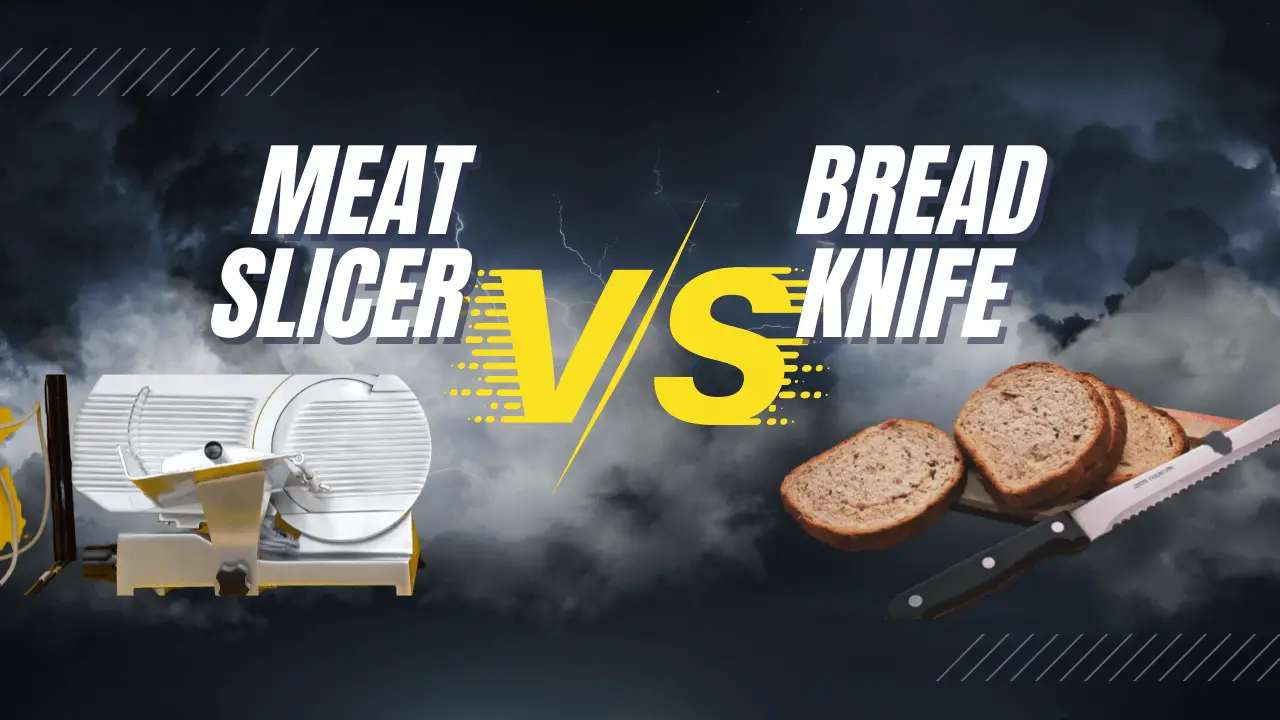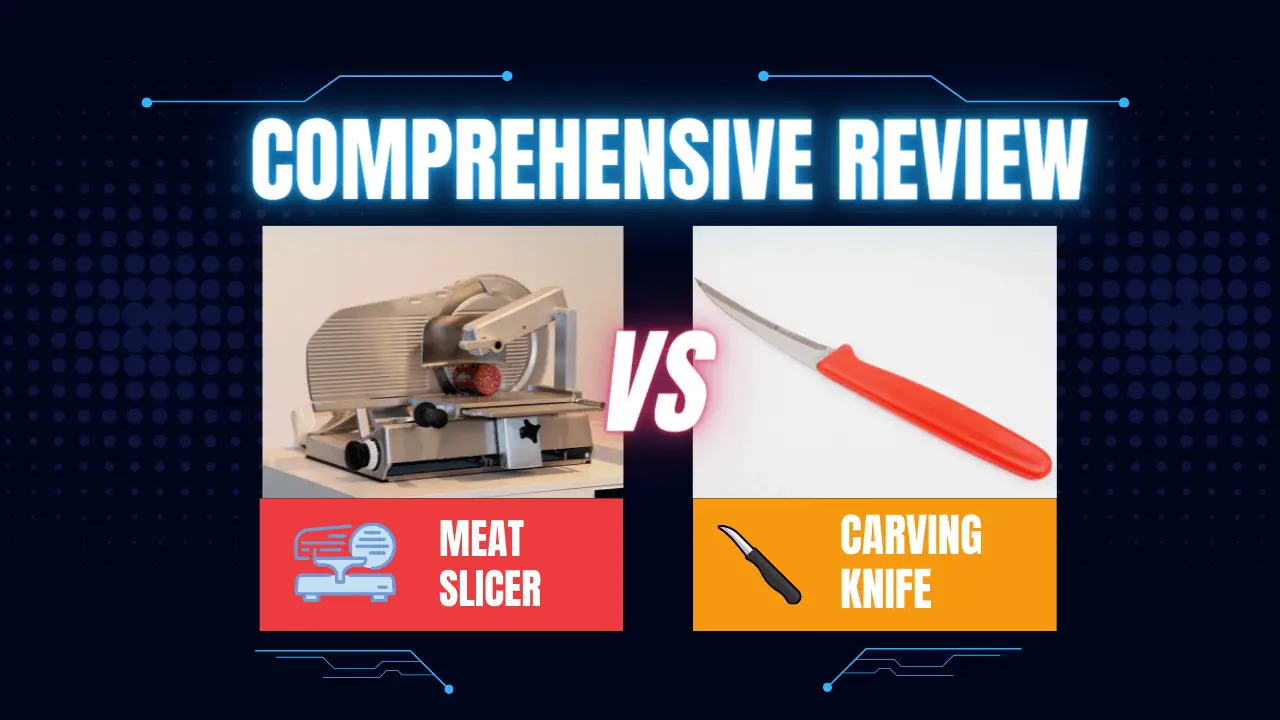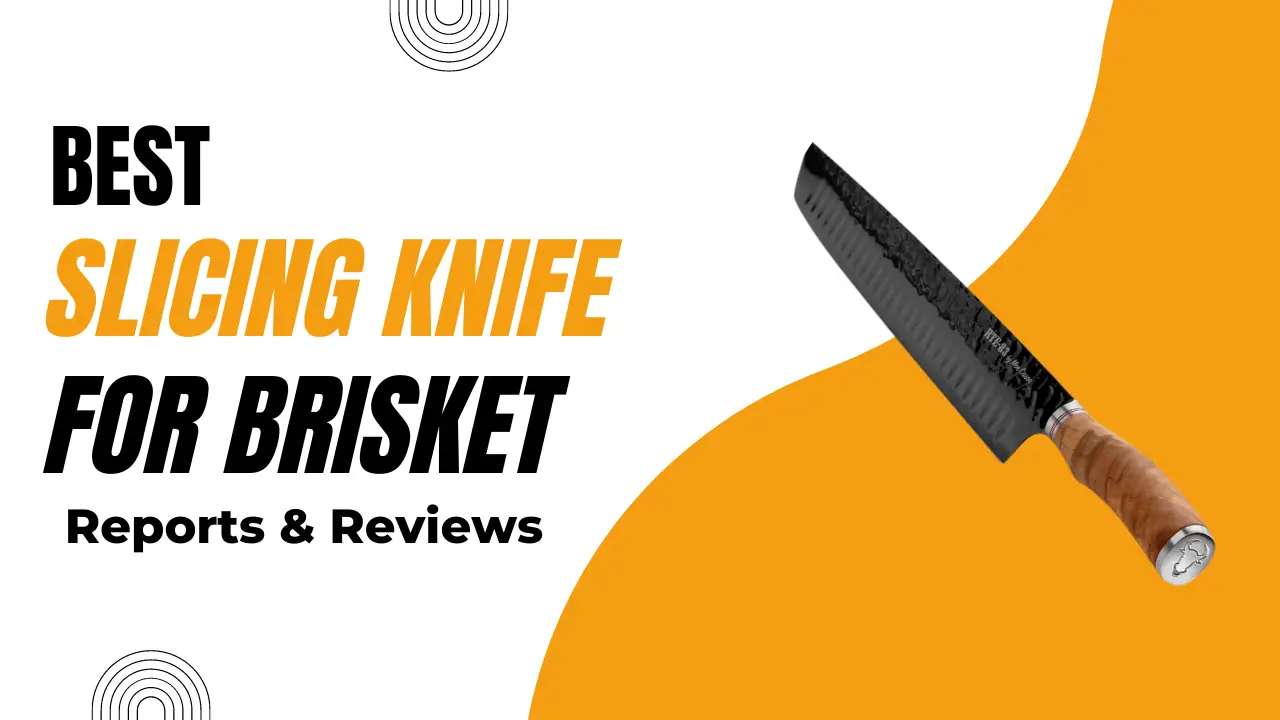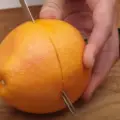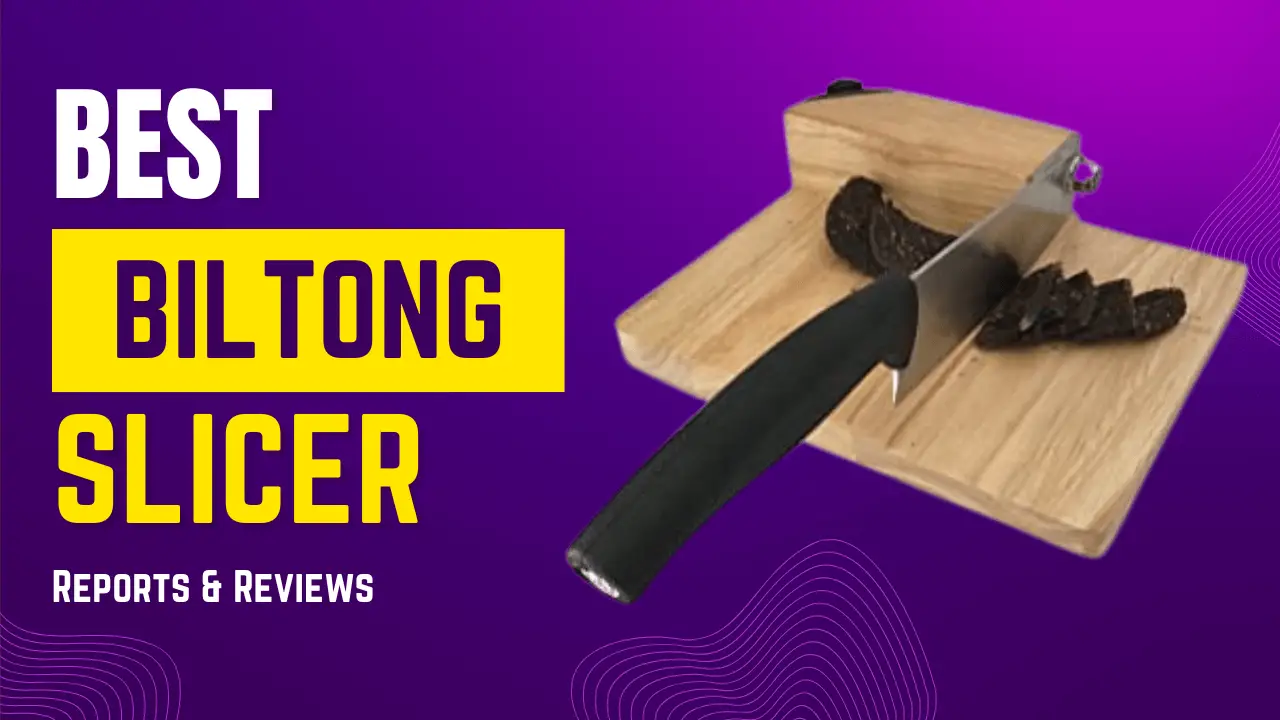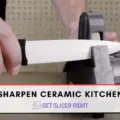When preparing a meal from fish, two of the most necessary tools are boning and fillet knives. Both knives have their uses for taking apart large pieces of fish, but each has different functions that make them ideal for different tasks. Knowing the difference between a boning knife and a fillet knife is essential for anyone preparing fish at home.
What Is A Boning Knife?
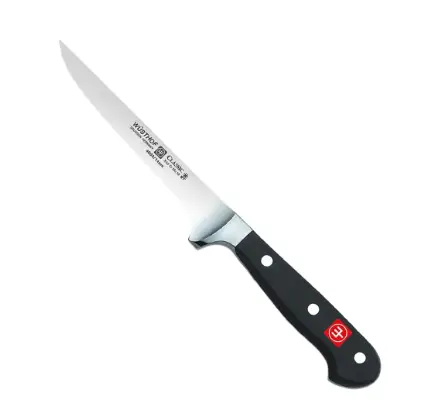
A boning knife is a specialized kitchen tool designed for the precise and delicate task of trimming and removing meat from the bone. The blade shape of a boning knife is typically narrow and curved to allow for accurate cuts along bones, cartilage, and joints. Boning knives usually range between 5-8 inches long, with stiff, semiflexible blades that allow for precision when cutting along the contours of a cut of meat.
Butchers and professional chefs at restaurants use boning knives. However, they can also be found in some home kitchens as. Boning knives are best suited for heavy-duty tasks such as splitting joints, disjointing limbs, and removing excess fat from a cut of meat instead of tasks such as slicing or filleting.
What Is A Fillet Knife?
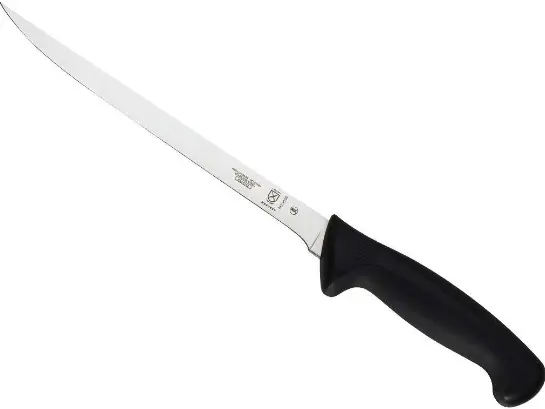
A fillet knife is a specialized kitchen tool designed to cut thin slices of meat and fish. The blade shape of a fillet knife is typically thin and flexible, allowing for clean slices along delicate cuts of meat and fish. Fillet knives usually range between 6-12 inches long, with very sharp and flexible blades perfect for slicing even the thinnest cut of meat or fish. Professional restaurant chefs use fillet knives. However, they can also be found in some home kitchens. Fillet knives are best suited for precision tasks such as thinly slicing steaks and filleting fish instead of heavy-duty tasks such as splitting joints or disjointing limbs.
Boning Knife vs Fillet Knife
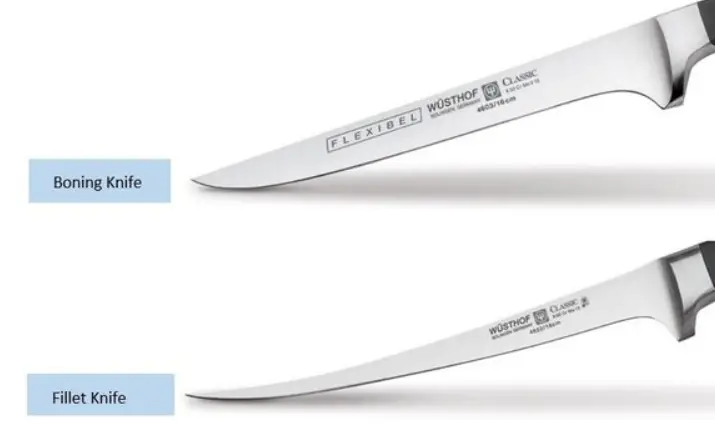
- Functions: A boning knife has a sharp and rigid blade designed to remove bones from meat, poultry, and fish quickly. Its long and narrow blade gives it the flexibility to maneuver around tight corners while still having the strength to cut through tougher cuts of meat easily. A fillet knife, on the other hand, is thinner with a more flexible blade. The flexibility of the blade is what makes it ideal for removing thin skin and flesh from fish, as well as slicing into thicker cuts of meat with precision.
- Size: Boning knives are available in various sizes and shapes, but most have a 6 to 8-inch long narrow blade. Fillet knives are much shorter, typically ranging from 4 to 10 inches.
- Features: The most important feature of a boning knife is its stiff blade which helps it maneuver around bone structures and cut through tougher cuts of meat. Fillet knives typically have serrated blades or grants (scalloped indentations) that help the blade glide along the fish without tearing or shredding the flesh.
- Uses: Boning knives are ideal for removing bones from larger cuts of meat, poultry, and fish, whereas fillet knives are perfect for preparing delicate or thin-skinned fish. If you’re a fan of sushi or sashimi, a fillet knife will help you prepare your fish with precision and accuracy.
- Design Difference: A boning knife has a much thicker and stiffer blade than a fillet knife. The thickness of the blade provides more strength while cutting through meat or poultry. A fillet knife has a thinner, flexible blade that can maneuver around bones and joints easily.
- Sharpness: Both knives should be sharpened regularly. However, a fillet knife will stay sharper for a longer period of time due to its flexibility. The thinner blade bends instead of losing its sharp edge when exposed to hard substances like bones.
- Materials Used: Boning knives and fillet knives are both distinguished by the material they are made of. Boning knives are usually made from stainless steel, while fillet knives are generally constructed from high-carbon steel. Stainless steel is durable yet more difficult to sharpen than high-carbon steel, which holds an edge better but is less corrosion-resistant. Both materials benefit from proper care and maintenance to maintain their performance.
- Flexibility: Fillet knives have a more flexible blade that can be used for shaping and trimming the flesh of the fish. On the other hand, boning knives are usually rigid and designed to cut through bones without bending. Therefore, if you are looking for flexibility in your knife when deboning meat or fish, a fillet knife is ideal.
- Resistance to Force: When deciding between a boning or fillet knife, you should consider how much force the blade can withstand. A boning knife is ideal for cutting through tough cuts of meat such as beef and pork. The narrow, pointed blade allows it to slip in between bones and joints easily, and its stiff blade makes it difficult to bend when applying pressure.
- Handle: The handle is an important aspect to consider when choosing between a boning knife and a fillet knife. A boning knife typically has a heavier handle that provides more control and stability when cutting through tougher cuts of meat. On the other hand, a fillet knife usually has a lighter handle that allows for better maneuverability when slicing delicate foods.
- Price: A boning knife is generally cheaper than a fillet knife as the materials used for making them are not as expensive. Fillet knives have a full-tang blade and often come with rubber handles made of more premium materials, making them more expensive than boning knives.
- Maintenance: Both types of knives require regular maintenance and regular sharpening. However, fillet knives require more delicate care because their thin blades can be damaged easily if not handled carefully. Boning knives are usually made of harder materials that don’t need as much attention to maintain their edge.
How To Use A Fillet Knife?
Step 1: Make sure your fillet knife is sharp before using it. You can do this by honing the blade or having a professional sharpen it.
Step 2: Keep your fingers away from the blade while using the knife. Finding a comfortable grip that allows you to make precise cuts while keeping your fingers out of the way is important.
Step 3: Start by making a shallow cut and following it with a more precise, deeper cut to separate the meat from the bone.
Step 4: When cutting near bones, use gentle pressure to keep the integrity of the fish intact while still removing flesh from the bone.
Step 5: Rinse the blade after each cut and check for any nicks or dullness to keep the knife’s edge sharp and safe to use.
Step 6: When filleting, pay attention to the angle of your knife so that you can make an even cut around the fish, keeping it whole as much as possible.
Step 7: Always clean your fillet knife after use and keep it stored safely away from children or other family members who are not trained in its use.
How To Use A Boning Knife?
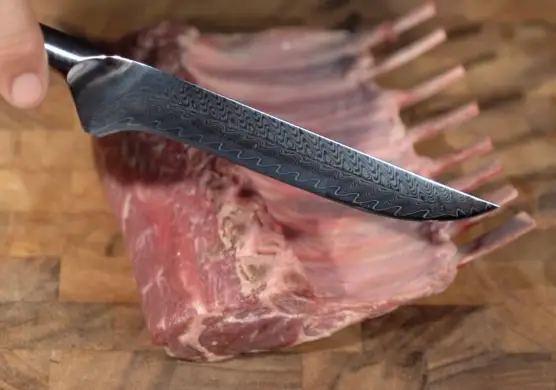
Step 1: To use a boning knife, select the right type for the job. Boning knives come in different sizes and shapes, so select one that suits your needs.
Step 2: When handling a boning knife, always begin by gripping it firmly with the blade pointing away from your body.
Step 3: To use a boning knife correctly, place the blade against the piece of meat and press down lightly using a rocking motion until you can feel the bone beneath the surface.
Step 4: Carefully cut away any tendons or fat attached to the bone with small saw-like motions from side to side as you make your way down the bone.
Step 5: Use a slicing motion to separate the meat from the bone.
How To Choose A Boning Knife?
- Choose the right size knife: Boning knives vary in length, ranging from 5 to 8 inches or longer; a larger blade can be used for bigger cuts, while smaller blades are good for more precise work.
- Consider the blade shape: there are two common styles of blades used in boning knives—curved or straight. Curved blades can make deeper cuts, while straight blades are better for precise slices.
- Opt for a flexible blade: Boning knives typically have flexible blades, making it easier to maneuver around tight curves and angles of the meat.
- Choose a knife with a handle that fits comfortably in your hand: The handle should fit comfortably and securely to have better control over the knife.
- Look for a well-made blade: Go with one made of high-grade stainless steel, which won’t corrode easily and will last longer than other blades.
- Consider the overall weight: Boning knives are usually lightweight, with blades weighing between 3 and 5 ounces. A lighter knife is easier to maneuver around bones and cartilage.
- Decide if you want a full-tang or partial-tang blade: Full tang means the blade’s metal extends through the handle, making it sturdier and more durable. Partial tang blades are less expensive but also less sturdy.
How To Choose A Fillet Knife?
- Look for a knife with a flexible blade: A good fillet knife will have a very thin, flexible blade perfect for delicate cutting and maneuvering. The blades should also be sharpened on both sides to ensure you can cut through any fish with ease.
- Choose the right size knife: The size of the blade is also important to consider when choosing a fillet knife. A shorter blade can maneuver more easily and provide more control, which is especially helpful for smaller fish. But if you want to fillet larger fish, a longer blade offers more surface area for cutting.
- Consider the handle: Another factor to consider when choosing a fillet knife is the handle. Ideally, look for a non-slip surface and ergonomic design that fits comfortably in your hand. This will make filleting fish easier and more efficient.
- Go for quality: You want to pick a quality fillet knife that won’t break easily or lose its edge after a few uses. Investing in a quality knife will ensure you can use it for many years and get the most out of your purchase.
FAQs
Can I use a boning knife to fillet fish or a fillet knife to debone meat?
While it is possible to use a boning knife for filleting fish and a fillet knife for deboning meat, they are not as efficient or precise as when used for their intended purposes. Each knife’s design is optimized for specific tasks, so it’s best to use them accordingly.
How do I maintain and care for my boning and fillet knives?
To maintain your knives, clean them with warm, soapy water after each use and dry them immediately to prevent rust. Sharpen the blades regularly using a honing rod or sharpening stone. Store your knives in a knife block, sheath, or magnetic strip to protect the blades from damage.
What other knives should I have in my kitchen?
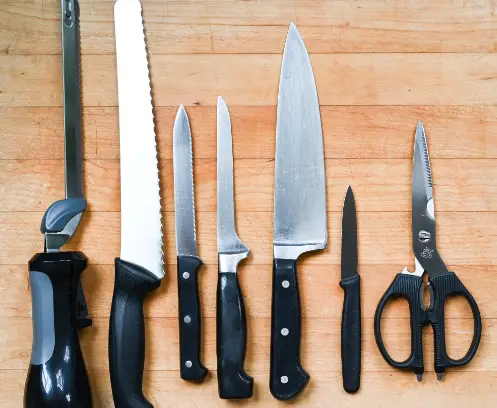
In addition to a boning knife and fillet knife, other essential kitchen knives include a chef’s knife, a paring knife, a serrated bread knife, and a utility knife. These knives cover most basic cutting tasks and are a good foundation for any kitchen.
Are boing knives sharper than kitchen knives?
Boning knives are specially designed to cut through meat and fish, usually with a more rigid blade than kitchen knives. This makes them incredibly sharp and effective for cutting the toughest meat parts without damaging them. Compared to other kitchen knives, such as fillet knives, boning knives tend to be much sharper and can produce cleaner cuts.
How often should I sharpen my boning and fillet knives?
The frequency of sharpening depends on how often you use your knives and the cutting tasks you perform. Generally, it is a good idea to hone your knives with a honing rod every few uses and sharpen them with a sharpening stone or professional service every few months or when you notice a decline in cutting performance.
Conclusion
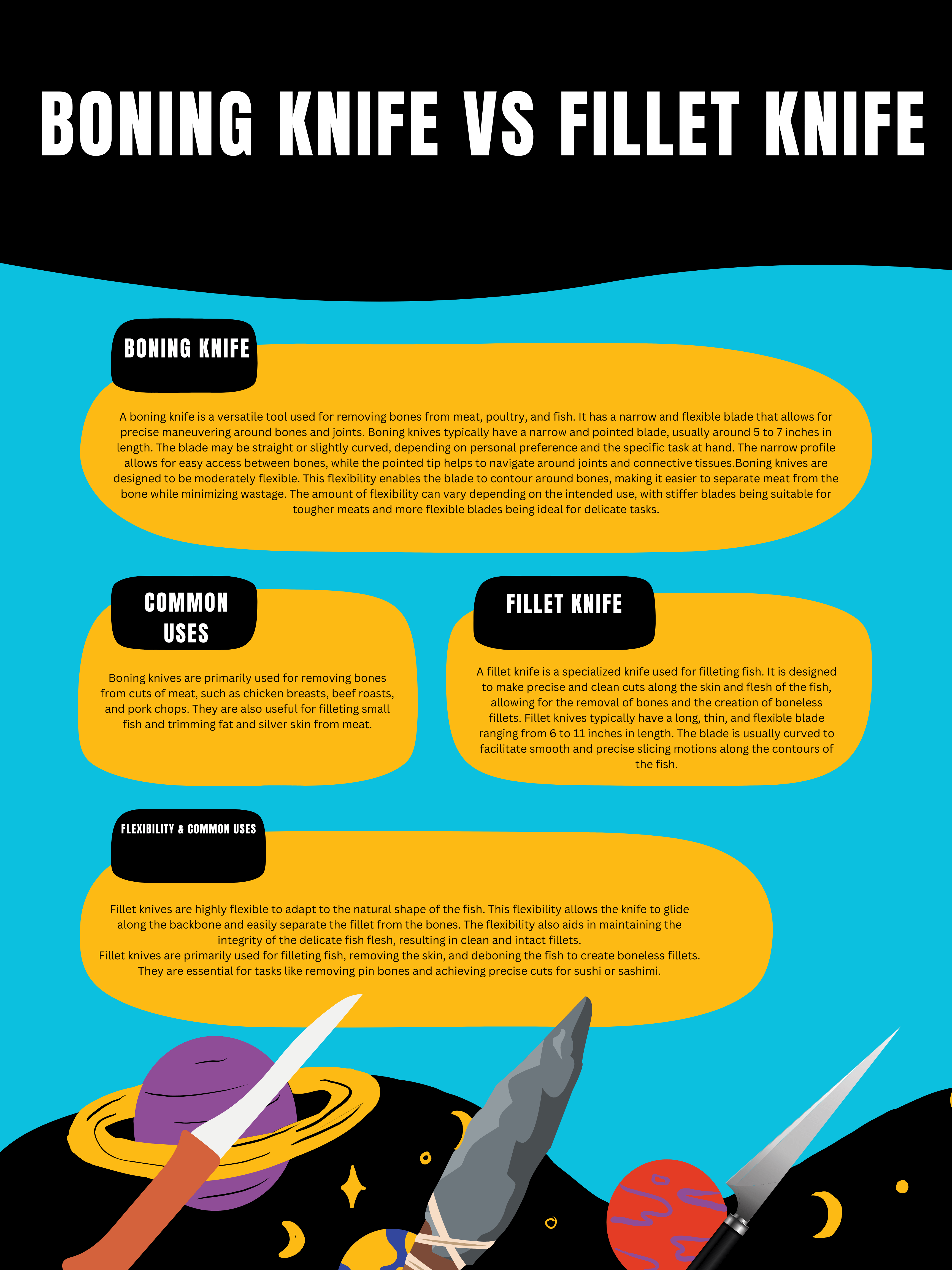
Both boning and fillet knives are essential tools for any kitchen. Boning knives remove bones from meat, poultry, or fish. They also have slender blade ideal for removing fat or sinews from the animal’s flesh. Fillet knives are thinner and more flexible than boning knives, making them the ideal choice for preparing fish. While they are often used interchangeably, it is important to recognize the difference between these two types of knives and use them in their respective contexts. Remember that safety comes first when using either knife; always take care when handling sharp knives. With proper maintenance, both boning and fillet knives can last a lifetime.

John Hebdon is a food enthusiast, passionate chef, and author of various articles and blog posts related to food and cooking. With a deep love for all things culinary, John’s blog serves as a platform to share his extensive kitchen experiences with a broader audience.
In addition to his culinary expertise, John has a flair for writing and a natural ability to share his passion for food with others. His articles and blog posts are informative, engaging, and packed with practical tips for readers of all skill levels.
As a food enthusiast and writer, John is always on the lookout for new and exciting culinary experiences. Whether it’s trying out a new restaurant, experimenting with a new recipe, or simply sharing a favorite dish with friends and family, John is always eager to explore and share the world of food with others.

